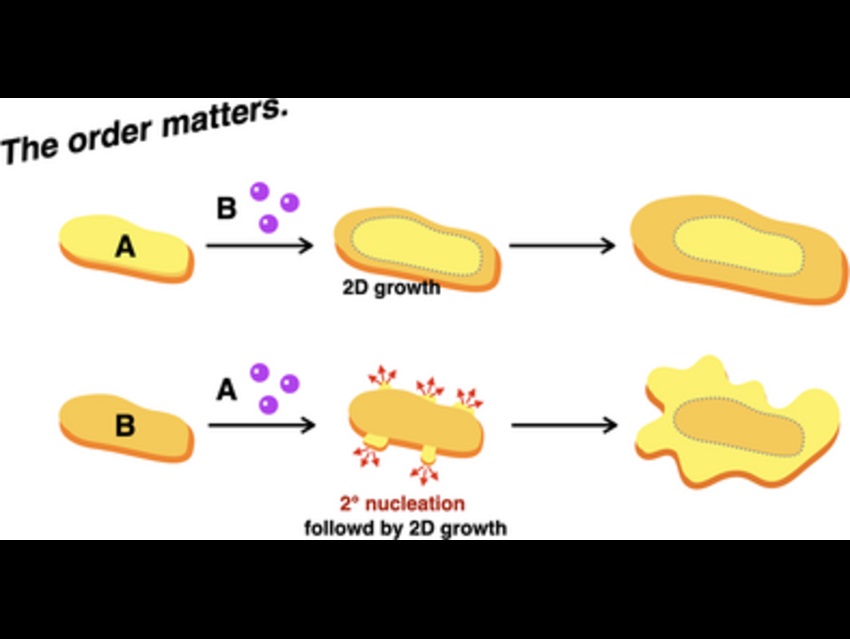Creating 2D supramolecular block copolymers, materials made from different molecular blocks held together by non-covalent forces, is challenging. The main issue is controlling how these blocks assemble in two dimensions, especially when different types of monomers are involved.
The study was carried out by Kazunori Sugiyasu, Department of Polymer Chemistry, Kyoto University, Kyoto, Japan, and colleagues. The researchers wanted to understand how the order of polymerization affects the final structure and properties of these materials. The investigation explored how polymerization order affects the formation of 2D supramolecular block copolymers made from two porphyrin-based monomers. These monomers can self-assemble into flat sheet-like structures through non-covalent interactions.
They used a seeded supramolecular polymerization method, where pre-formed “seeds” guide the addition of new monomers. By carefully adjusting solvent mixing and temperature, they triggered polymer growth and used advanced techniques like atomic force microscopy (AFM), UV-vis spectroscopy, and fluorescence imaging to observe the resulting structures.
Their findings showed that the order in which monomers are polymerized directly affects the shape, size, and arrangement of the resulting 2D copolymer sheets. This means that the polymerization sequence is a powerful tool for controlling material architecture.
This study is the first to demonstrate that the sequence of polymerization steps can effectively control the formation of 2D block supramolecular copolymers. The researchers showed that initiating polymerization with one block versus another leads to distinctly different structural outcomes. By uncovering this relationship, the work offers a new strategy for designing functional 2D materials with customizable properties with potential applications in electronics, sensing technologies, and energy-related devices. It could help scientists build custom 2D materials for use in solar cells, sensors, or flexible electronics. Future work may explore more complex block sequences, responsive materials, or multi-functional surfaces.
- Polymerization Order in the Synthesis of 2D Block Supramolecular Copolymers
Zhehui Jin, Masayuki Takeuchi, Yutaka Wakayama, Kazunori Sugiyasu
Chem.Eur. J. 2025
https://doi.org/10.1002/chem.202501739



